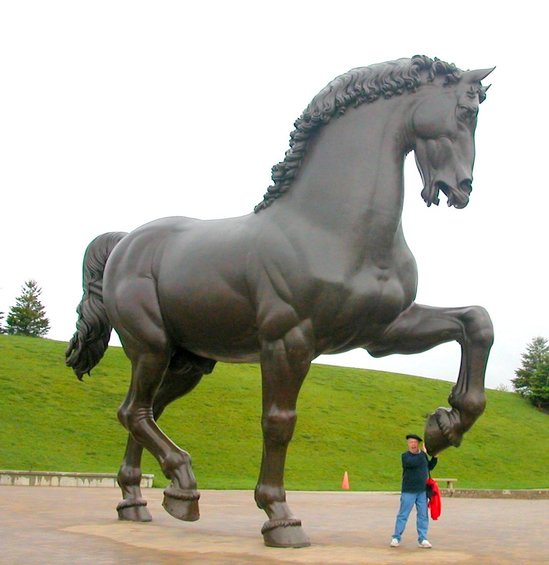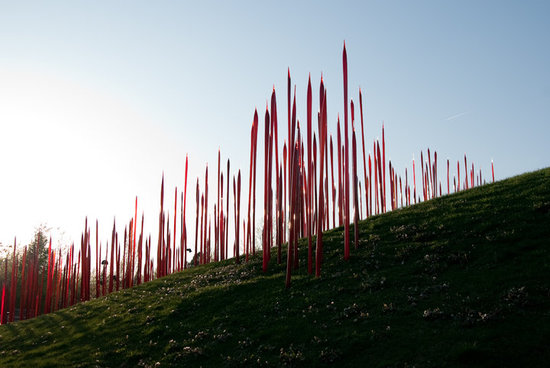The tulip country of western Michigan is home to one of the nation's foremost outdoor sculpture parks, Meijer Gardens, just outside Grand Rapids. (By coincidence, philanthropist Frederik Meijer and Portland's almost identically named Fred Meyer both made their fortunes with regional chains of grocery stores.) The Meijer estate seeded the 32-acre sculpture park, part of a 130-acre expanse, with Meijer's personal collection when it was founded 15 years ago. The number of sculptures in the permanent collection has grown, over the years, to include 160 monumental works by the likes of Alexander Calder, Alexander Liberman, Henry Moore, Claes Oldenburg, Louise Nevelson and Dale Chihuly, in addition to world-renowned works by Rodin ("The Kiss") and Degas ("Dancer Looking at the Sole of Her Right Foot").
Now, the scale of Chihuly's designs demands a grand public setting. The individual pieces of "Over Venice," for example, would make no visual sense inside a museum. So Meijer Gardens is an ideal venue for a temporary exhibit (through September) titled "A New Eden," that features 15 Chihuly pieces. (There's a Facebook page with photos here and an effusive USA Today piece headlined "Chihuly sculptures invade Michigan" here.)
The pretentious "A New Eden" theme at least ties in with Meijer's goal was of uniting the visual art of humankind and the visual art of nature. There are extensive botanical gardens (including a mini-farm, a butterfly exhibit and a five-story conservatory) at Grand Rapids in addition the sculpture park. Some 600,000 visitors a year pay the $12 entrance fee, yet Meijer Gardens isn't a profit-making venture; it requires regular underwriting from private donors. And that's just one point of the difference between Grand Rapids and the proposed Chihuly building at Seattle Center.
One might complain that Chihuly gets insufficient respect as a native son (a valid point) and that Seattle "owes" him a museum (debatable). Living artists are surely entitled to make a living from their art, the argument goes. (Yes, that's what art galleries are for.) Chihuly, on the other hand, has found immense commercial success, enough to employ a small army of craftsmen to execute his designs. (I once invited Chihuly, on behalf of Chateau Pichon-Lalande in Pauillac, to create a wine-oriented exhibit in the vineyards of Bordeaux. He liked the idea. Then his staff sent me an $250,000 estimate just for an initial site visit. Pichon's owner balked; end of project.) Still, there's no doubt that many of Chihuly's works, in the proper setting, are simply stunning. Their unpredictable organic forms grow out of the earth; their vibrant colors echo tulip fields, mountain forests, spacious skies. This, you realize, is where great sculpture belongs: in the great outdoors. Seattle Art Museum already has a relative small (9-acre) sculpture park, open to the public free of charge; too bad it doesn't have room for more big-vision, outsize art.

Visiting the Meijer Gardens in 2006, Cornichon came to the rescue of this 20-foot bronze sculpture, American Horse, based on an original by Leonardo da Vinci. Photo by David Morgenstern

![Reblog this post [with Zemanta]](http://img.zemanta.com/reblog_e.png?x-id=50d16989-c901-4dd2-8ced-e97316627b7b)
Leave a comment